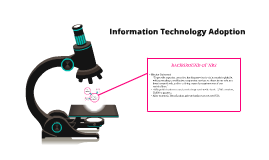NBS
Transcript: Definition of screening Definition of newborn screening Newborn screening tests look for serious developmental, genetic, and metabolic disorders.so that important action can be taken during the critical time before symptoms develop. Most of these illnesses are very rare, but are treatable if caught early. Aims of Neonatal Screening Screening is a early detection of screenable disorder and it has treatable ,the intervention will change the out come. The initial aim of newborn screening was to identify infants with serious but treatable disorders, so as to facilitate interventions to prevent or ameliorate the clinical consequences of the diseases . Damage can lead to : 1- Mental Retardation. 2-Disability. 3- Death. Screening is the secondary prevention , because it is method to diagnose and treat existing disease in early stages before it causes significant morbidity. Screening Neonatal for such dangerous and rare diseases gives them the best chance for a The timing of the test also has an important influence on the results. A newborn during the first 72 h is catabolic to some extent, and this is very useful for detecting disorders of intermediary metabolism. When baby is 1 or 2 days old , but some city require that baby has newborn screening again about 2 weeks later . Type of Nernatal Screening Newborn screening tests are mainly carried out on blood spots dried on specially manufactured filter paper, usually obtained by heel-stick. Although various forms of venous blood sampling may also be used, filter paper blood samples will be considered here. Methods A wide variety of technologies can be applied to filter paper samples, including bacterial inhibition assays, chromatographic techniques, enzyme-linked immunosorbent assays (ELISA), fluorescent immunoassays (FIA), radioimmunoassay (RIA), and most recently electrospray ionisation tandem mass spectrometry (MSMS). Screenable Disorders(IEM) Biochemical (metabolic) • Phenylketonuria • Galactosemia Hematology disorders : Sickle cell disease and Thalassemia. Genetic disorders : Cystic Fibrosis. Endocrine disorders :Hypothyroidism. Clinical Features: Developmental delay Behavioral disturbance Mental retardation Seizures (25%). Characteristic musty odor (sweat , urine) Lighter pigmentation (hair, skin, eyes) Eczema (common) Pku Test Methods: Raised plasma phenylalanine level Biochemical assays of PAH enzyme. Treatment of PKU: Removal of phenylalanine from diet, Most common disorder of carbohydrate metabolism. It is an autosomal recessive disorder in which the body cannot break down the sugar called galactose. Defect in Galactosemetabolism due to enzyme deficiency (GALT) Clinical features : growth retardation. developmental delay. Some babies will develop a protruding tongue. Poor muscle tone . Definition : Cystic fibrosis is an autosomal recessive disorder, and most carriers of the gene are asymptomatic. Cystic fibrosis is a disease of exocrine gland function that involves multiple organ systems but chiefly results in chronic respiratory infections, pancreatic enzyme insufficiency, and associated complications in untreated patients . End-stage lung disease is the principal cause of death. Test for the dieses : Newborn screening for cystic fibrosis based on the detection of an elevated blood level of immunoreactive trypsin (IRT) whitch is a protein produced by the pancreas that is linked to CF. Treatment : early treatment with physiotherapy and antibiotics will improve the long-term prognosis. If not treated : associated complications will develop : The most common complication is chronic respiratory infection. Bowel problems, such as gallstones, intestinal obstruction, and rectal prolapse Coughing up blood , Chronic respiratory failure. Liver disease or liver failure, pancreatitis, biliary cirrhosis Sickle Cell Disease This is a genetic disease caused by replacement of amino acid glutamic acid (polar negatively charged) at position 6 of subunit by valine (hydrophobic, nonpolar). Common Symptoms of Sickle Cell Disease: -The most common symptom of sickle cell disease is pain -Infection,Anemia ,Fatigue -"Acute Chest Syndrome" -Jaundice -Damage to the organs, such as the liver, kidneys, or lungs. -Brain damage or stroke. To look for sickle cell disease at newborn screening we based on hemoglobin electrophoresis Treatment : Infants who have been diagnosed with sickle cell anemia through newborn screening are treated with antibiotics and receive needed vaccinations.-Blood transfusions -NSAIDs .-Research on blood and marrow stem cell transplants, gene therapy, and new medicines for sickle cell anemia is ongoing ThalassThalassaemia is inherited disorder of the haemoglobin molecule. Decrease rate of synthesis of globin chains due to gene mutations. *The two main types of thalassaemia are ß and αemia Haematological methods commonly used to diagnose thalassaemia Haemoglobin electrophoresis. Standard Treatments : Blood Transfusions Transfusions of red blood cells are the main

















